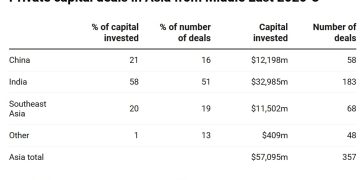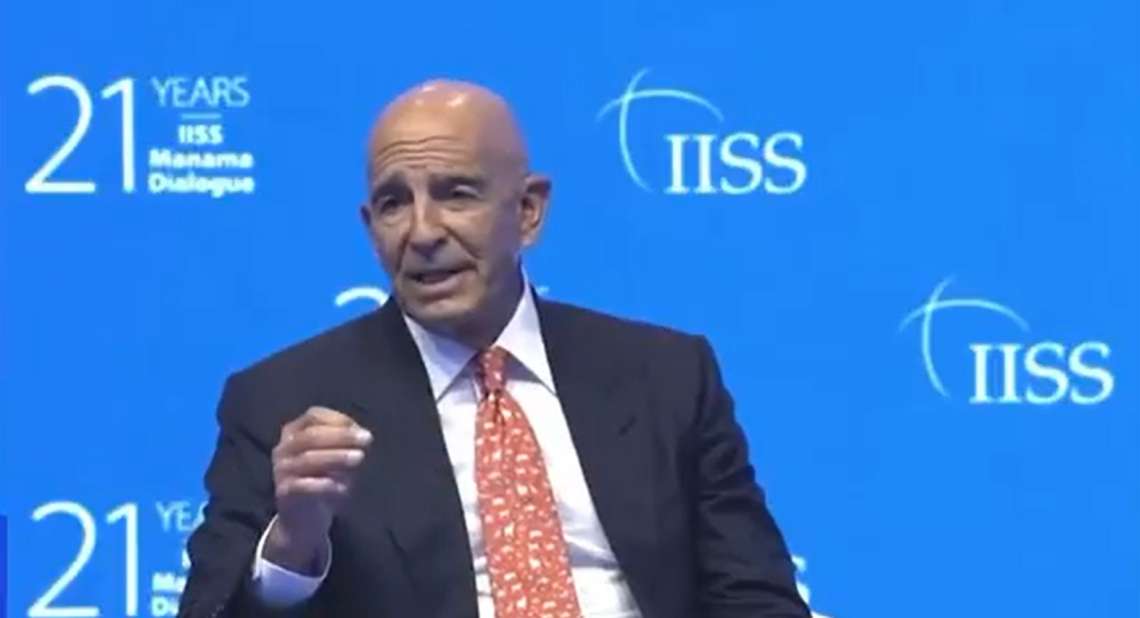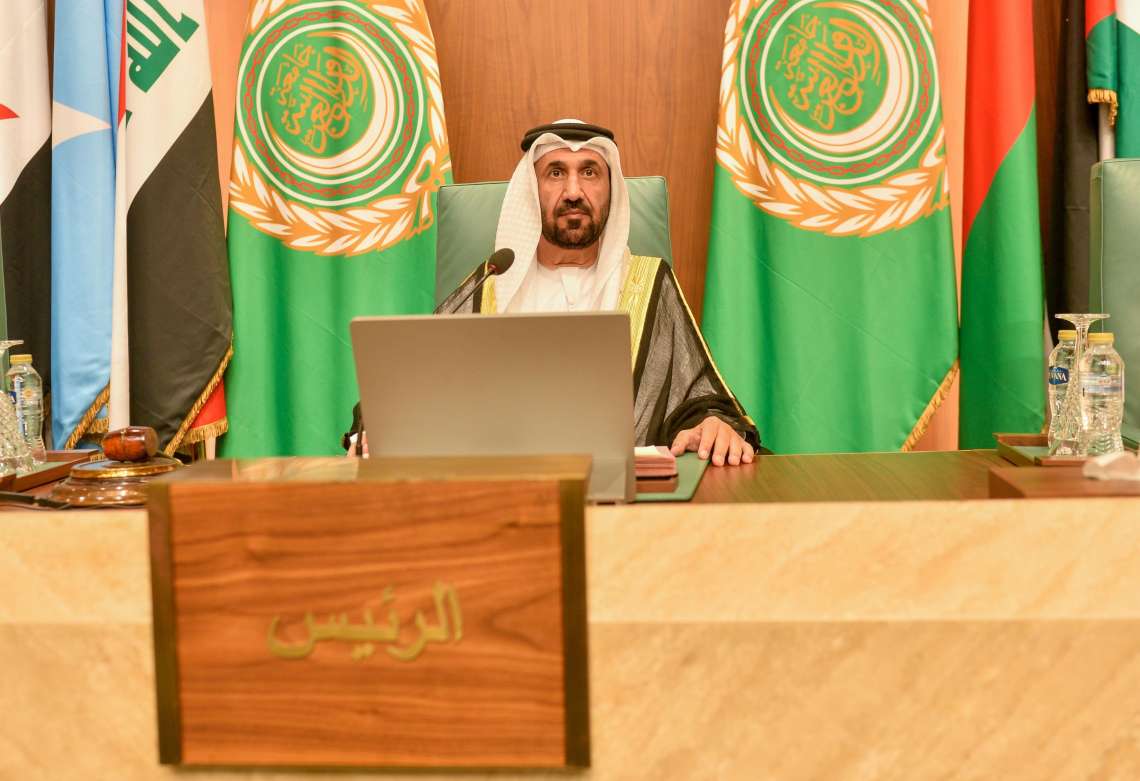India accounted for more than half of all investment deals by Middle Eastern funds in Asia and 58 percent of the capital invested in Asia by Middle Eastern entities since 2020, dwarfing China and Southeast Asia…reports Asian Lite News
India is more than twice as important as China as a target for Middle East investment, an industry report has revealed.
Since 2020, private capital deal value from the Middle East into Asia has soared more than sixfold, from $14 billion between 2016 and 2019 to $83 billion since 2020, data from the Global Private Capital Association shows.
Driven by strong interest from Middle East sovereign wealth funds in tech and consumer digital platforms such as Jio Platforms, Flipkart and Reliance Retail Ventures, India topped all Asian markets for cross-border private capital transactions by Middle East investors since 2020, Arabian Gulf Business Insight reported.
India accounted for more than half of all investment deals by Middle Eastern funds in Asia and 58 percent of the capital invested in Asia by Middle Eastern entities since 2020, dwarfing China and Southeast Asia.

“There is a really diverse opportunity across the asset classes in India compared to China,” Jeff Schlapinski, managing director of research at GPCA, told AGBI.
“It’s not just private equity and venture deals, but also infrastructure, private credit, whereas we’ve seen very little on the private infrastructure side in China compared to this and less activity in the private credit space in China as well.”
In February, the Abu Dhabi sovereign wealth fund Mubadala signed a $1 billion deal with Goldman Sachs to co-invest in private credit opportunities in Asia, with a particular focus on India.
In July last year, Abu Dhabi Investment Authority (ADIA), the UAE’s largest sovereign wealth fund, opened an office in Gujarat International Finance Tec-City and last month announced plans for a $4 billion to $5 billion fund to drive UAE investments in India.
Earlier this month, it was reported that ADIA had acquired shares in the Indian budget carrier SpiceJet.
Scott Livermore, chief economist at Oxford Economics, said India was seen as a potential winner as the West turns away from China for geopolitical reasons and to diversify its supply chains.
“For the Middle East, this is much more about the rise of opportunities in India than seeking alternatives to China,” he said.
India became the world’s most populous country in 2023, and the growth in its middle class is making it an attractive investment destination for Gulf companies and sovereign wealth funds.
Schlapinski said: “I definitely think that part of the motivation, for sure, is access to capital in a more difficult environment for fundraising, in which many US and European investors have perhaps been overextended on the private market side.
“Now they are adjusting their portfolios accordingly, whereas sovereign funds from the Middle East continue to expand their balance and do deals.”
Gulf-Asia trade rose by around 35 percent between 2021 and 2022, whereas the Gulf’s combined trade with the US, UK, and Western Europe grew by approximately 32 percent over that period, according to a report from Asia House.












